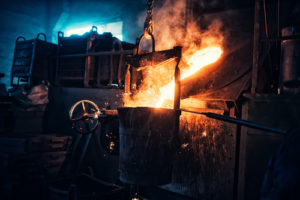Process improvement, whether in the zinc die casting or other manufacturing segments, consists of a set of actions that are undertaken to improve production times, reduce costs, and, as a result, give outputs that satisfy client requirements in terms of both timing and performance.
It can be developed via a clearly defined action plan, taking into account the intricacy of elements that characterize the production unit. Production is composed of not just equipment, but also the design of a product, technologies, many operators, and planning activities, to name some of the most significant components of it. To enhance the whole production process it is important to have a comprehensive view of these elements, to execute a strategy that is functional upon several aspects.
Consequently, the initial step to take is the tools’ setting and adjustment actions’ setting that can have an impact on the enhancement of distinct production stages. The process improvement plan of certain die casters is composed of the following four vital elements.
Automation
The introduction of automated machinery in a production unit that are equipped with state of the art technologies generate relevant advantages in terms of decreased lead time, costs, and client-requested quality standards’ achievement. The use of automated systems in place of workforce lets companies obtain a quicker process, subsequently improving the entire lead time.
Besides, automation leads to a decreased probability of error as opposed to manual operations. This, in turn, translates to a production cost reduction, further increased owing to material and energy saving generated by automation. The automated machinery’s introduction in a production unit leads to another key benefit that lets quality control enhancement, too. In fact, operators who earlier dealt with manual operations on a part owing to automation can take accountability for other activities using a higher added value, like quality control.
Simulation
The simulation of a die casting process stands for another vital element that affects process enhancement: using simulation software, engineers can foresee material reactions within the mold. It is feasible owing to the mold’s thermos fluid dynamic analysis, called Computational Fluid Dynamics (CFD), which lets engineers detect potential defects on the casting, like hot spots and cold laps.

Die Casting Segment
The simulation phase proves particularly helpful to get an optimized mold design prior to beginning with the die casting process. During this phase, it is possible to choose the best or feasible mold design parameters to be applied, so that likely defections on the die-cast component are detected earlier, and cost and further mechanical operations in the manufacturing are decreased.
Scrap Reduction
Accurate and thorough planning of the entire component manufacturing process can result in reduced scrap material. First, it is essential to carry out a product analysis and process analysis focusing on scrap’s causes. To identify them, engineers have to use simulation software in order to foresee each stage of the casting process, from design to die-cast finishing operations.
Simulation once again proves to be indispensable for the manufacturing process enhancement, since it lets engineers avoid defects and check technical properties prior to beginning with the casting or component manufacturing, hence leading to consistent cost as well as lead time reduction. After they figure out causes of scrap, it is feasible to continue to the outlining of likely solutions to apply, identifying the most important steps in the manufacturing process and regularly checking them.
Cycle Time
The term “cycle time” refers to the time period necessitated to make an end product, whether die cast light fixtures or other components. The idiom stands for a central variable in component manufacturing since a decreased cycle time in turn results in a decreased lead time, the time required to satisfy a customer’s requirement in terms of product supply. A well-optimized lead time results in increased client satisfaction, since it lets a product supplier meet client-demanded deadlines and standards. As a result, to guarantee an efficient and quick service, cycle time and lead time must be improved to the maximum possible extent.
The cycle time can be reduced by paying attention to distinct aspects of production, particularly to the simulation phase as well as technological systems of the manufacturing unit. As said, it is significant to simulate manufacturing first, and define the best possible process parameters to apply for it. In this way, likely defections will be prevented from the start of the production phase to the end and, subsequently, it will be possible to do away with further mechanical operations.
Another central element for the cycle time reduction is the foundry’s technological system, the innovation level of which can lead to relevant time shortening during the manufacturing process. In fact, automated machinery lead to optimized cycle time and more precise operations, differentiating factors for achieving customers’ expected or requested performances. What’s more, regular machinery checks help to understand how the cycle time can further be enhanced.
